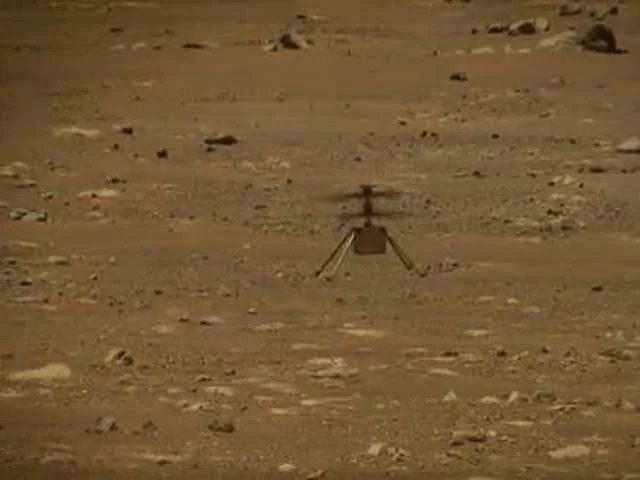NASA’s Mars helicopter, Ingenuity, concludes its historic mission after sustaining rotor damage. The solar-powered aircraft exceeded expectations with 72 flights on the Red Planet.
Ingenuity, Concludes Historic Mission After Rotor Damage
NASA’s groundbreaking mini helicopter, Ingenuity, has completed its mission on Mars following damage to one of its rotor blades. Arriving on the Red Planet in February 2021, Ingenuity achieved a significant milestone just two months later by executing the first powered and controlled flight on another celestial body.
Ingenuity’s final flight tally stands at an impressive 72 flights, covering a total distance of 11 miles. This surpasses its original plan of a 30-day mission, highlighting the helicopter’s resilience and effectiveness in its extended operational period.
The solar-powered aircraft played a crucial role for NASA, aiding in the identification of locations for the Perseverance rover, which accompanied it on the mission. However, the mission took an unexpected turn when an image from Ingenuity’s camera revealed damage to one of its rotor blades. This occurred during a landing earlier in the month, resulting in a temporary loss of contact with the Perseverance rover.
NASA Administrator Bill Nelson announced on Thursday that Ingenuity’s mission had reached its conclusion. The copter remains upright and in communication with flight controllers, although the rover is currently too distant to capture the final resting place of Ingenuity.
“We’re investigating the possibility that the blade struck the ground,” stated Mr. Nelson. Lori Glaze, director of NASA’s planetary science division, expressed the bittersweet nature of the announcement, acknowledging that while the conclusion was inevitable, it doesn’t diminish the remarkable success of the mission.
Ingenuity’s contributions to Martian exploration have exceeded expectations, showcasing the potential of aerial technology in planetary exploration. NASA’s focus now shifts to analyzing data gathered by both Ingenuity and Perseverance to enhance our understanding of Mars and lay the groundwork for future missions.

